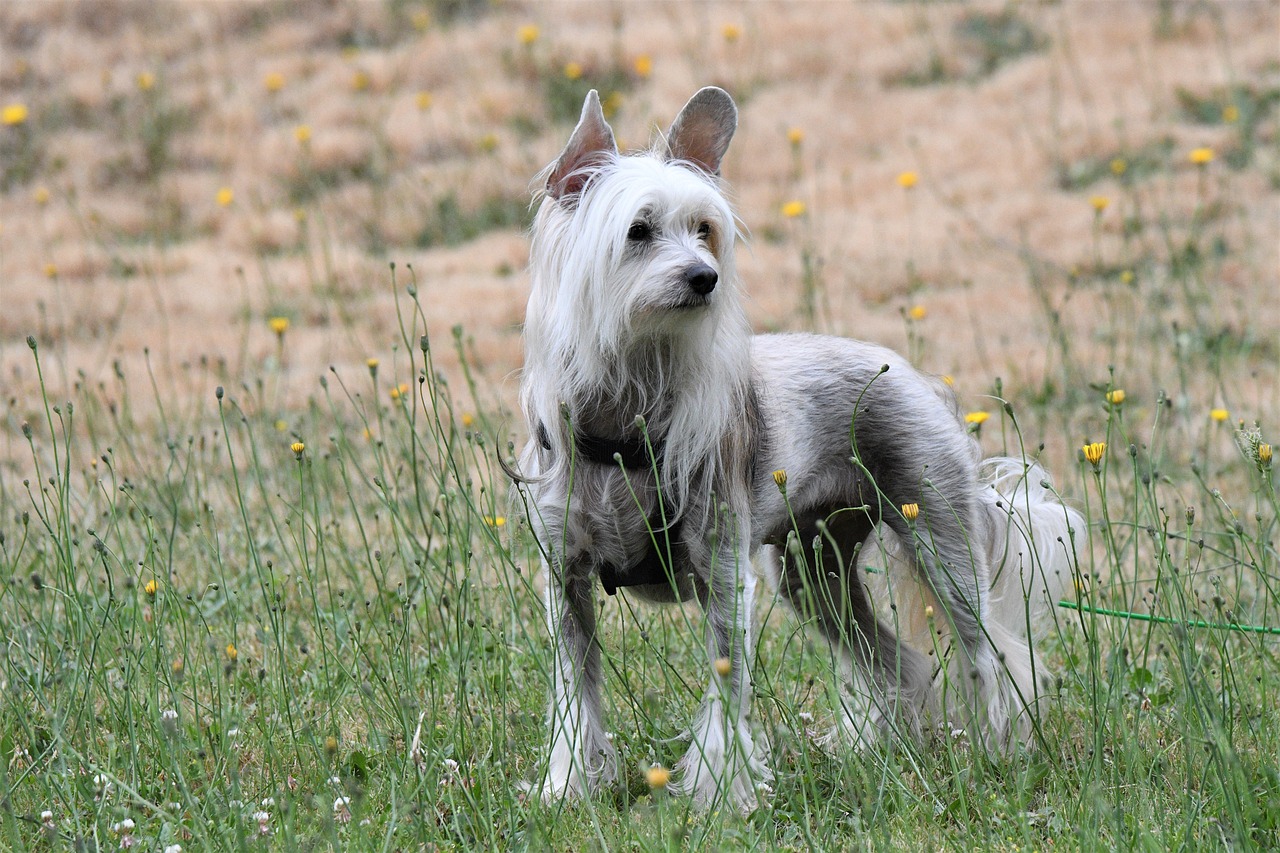Chinese Cresteds are small, affectionate, and lively dogs known for their distinctive appearance, boasting hairless bodies with tufts of fur on their heads, tails, and feet. Like all breeds, Chinese Cresteds are prone to certain health conditions. Understanding these potential problems and their symptoms can help owners ensure the health and longevity of their furry friends.

-
Dental Problems
Chinese Cresteds, particularly the Hairless variety, are notorious for their dental issues. This breed often has fewer teeth than other dogs, leading to overcrowded or misaligned teeth and subsequently, periodontal disease.
Watch for bad breath, a common sign of dental disease. Other signs include a loss of appetite, excessive drooling, discolored teeth, and bleeding or inflamed gums. Regular veterinary dental check-ups, along with at-home tooth brushing, can help maintain good oral health.
-
Eye Disorders
Chinese Cresteds are predisposed to several eye conditions, including progressive retinal atrophy (PRA) and glaucoma. PRA causes a slow degeneration of the retina, resulting in eventual blindness, while glaucoma is characterized by increased pressure within the eye, causing pain and vision loss.
Signs of eye disorders may include redness, swelling, excessive tearing, cloudiness, changes in eye color, or your dog rubbing its eyes excessively. Changes in your dog’s behavior, such as bumping into furniture or difficulty navigating, may also suggest vision loss. Regular eye exams by your vet can aid in early detection and management.
-
Skin Conditions
The Hairless Chinese Crested is particularly susceptible to a variety of skin issues due to their lack of protective fur. They can experience acne, dry skin, and sunburn, and are more prone to allergies and skin infections.
Signs of skin issues can include redness, itchiness, sores, patches of missing hair, and changes in skin color or texture. Regular grooming, including bathing and moisturizing, can help keep skin issues at bay. Additionally, using dog-safe sunscreens can protect against harmful UV rays.
-
Patellar Luxation
This condition, common in small dog breeds, occurs when the dog’s kneecap (patella) slips out of its normal anatomical position, leading to discomfort, lameness, and in severe cases, arthritis.
Signs include intermittent skipping or hopping on a hind leg, sudden lameness, or an unusual hindleg posture when standing. If you notice these symptoms, a visit to the vet is warranted for diagnosis and treatment options.
-
Canine Multiple System Degeneration (CMSD)
CMSD is a genetic neurodegenerative disorder exclusive to Chinese Cresteds. It typically presents between 8 months to 2 years of age, progressively worsening over time.
Signs can include an awkward gait, difficulty walking, tremors, and eventually, problems with swallowing. If you notice any of these signs, particularly in a young dog, immediate veterinary attention is necessary. Although there is no cure for CMSD, symptoms can be managed with supportive care to enhance the quality of life.
Conclusion
While these health issues can seem daunting, knowing the signs and keeping an eye out for symptoms can lead to early detection and more effective treatment. Regular veterinary check-ups, a balanced diet, and appropriate care, particularly for the skin and teeth, are essential to keep your Chinese Crested healthy. Always consult your vet if you notice any changes in your dog’s behavior or physical condition, or if you have any concerns about their health. Chinese Cresteds, with their unique charm and affectionate nature, make wonderful companions and, with the right care, can enjoy a long, happy life.
 Toledo, United States.
Toledo, United States.